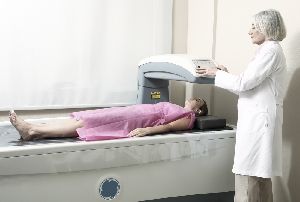
As women approach menopause, their risk of developing certain conditions increases. One such condition is osteoporosis, which is a disorder that weakens the bones and increases the risk of fractures. Along with undergoing routine bone density testing, understanding this disease is the best way to mitigate injuries. Consult the guide below to learn more about the disorder.
How Is Osteoporosis Connected to Menopause?
During menopause and throughout the postmenopausal years, women's production of estrogen decreases significantly, which can lead to bone deterioration and osteoporosis. Up to 20% of bone loss can occur throughout these stages. If you're between 45 and 55 years old, it's essential to keep track of your health as menopause affects your body.
What Are the Symptoms of Osteoporosis?

Most people have no symptoms when they first develop osteoporosis. That's why routine bone density testing is so crucial; in the early stages, this is often the only way doctors can detect the condition.
If left untreated, osteoporosis will worsen, and you may develop a hunched posture, back pain, and fragile bones. You may even lose some height in rare circumstances.
How to Prevent This Disorder
Although many risk factors for osteoporosis, such as age and family history, are beyond your control, you can still make an effort to lower your risk of acquiring the disease. Strength training exercises, such as lifting weights and Pilates, can enhance bone strength and flexibility. Consuming plenty of calcium and vitamin D will also strengthen the bones and prevent injuries.
If you need to schedule a bone density testing appointment in Bayside, NY, look no further than Main Street Radiology. Their experienced radiologists will guide you through every step of the process and ensure you have all the resources needed to prevent or treat osteoporosis. Call (718) 428-1500 or visit them online to learn more.
About the Business
(23 reviews)
Have a question? Ask the experts!
Send your question

